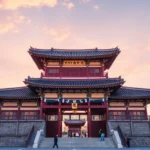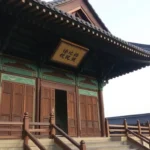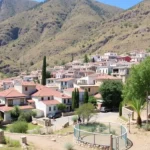15 things to see and do on Jeju Island

Imagine a place where volcanic landscapes meet pristine beaches, where cozy cafes beckon and ancient traditions thrive amidst modern comforts. Welcome to Jeju Island, the jewel of South Korea, a destination that captures the hearts of both locals and global travelers. If you’re eager to discover everything this enchanting island has to offer, you’re in for a treat.
After an unforgettable five-day adventure exploring every nook and cranny, we’re excited to share the must-see spots and activities that will make your visit to Jeju truly memorable.
Discovering Jeju Island
Jeju, the largest island in South Korea, is renowned for being the go-to getaway for romantic escapades. Its popularity stems from a harmonious blend of wild nature, stunning beaches, and top-notch infrastructure, making travel a breeze. Yet, this very convenience can lead to unexpected crowds, so it’s essential to adjust your expectations. Instead of imagining a remote paradise, think of Jeju as a vibrant, bustling destination that attracts not only Koreans but also international tourists from as far as China and beyond.
Often dubbed the “Hawaii of Korea,” Jeju has earned this nickname due to its sometimes similar charm. The island's breathtaking natural beauty can easily make you forget the hustle and bustle of tourist hotspots, so we encourage you to embrace every moment of your stay. Jeju truly is a magnificent destination!
At the heart of the island lies Hallasan, South Korea's tallest peak at nearly 2,000 meters. Surrounding it, you’ll find breathtaking cliffs and beautiful beaches perfect for summer. With scenic drives, popular hiking trails, and a unique culinary scene, Jeju offers a well-rounded experience that caters to both relaxation and adventure. Whether you seek tranquility or action, Jeju has something for you.
Now, let’s delve into the top attractions and activities you won't want to miss during your visit to Jeju, along with some insights into Jeju City things to do:
1. The Best Beaches in Jeju
Jeju's coastline is dotted with an array of beaches, each with its own unique charm. From black volcanic sand to fine white beaches with crystal-clear waters, the northeastern region offers some of the most stunning spots. Here are our top picks:
- Gwakji Beach: Rent a kayak, explore the nearby Handam Coastal Walk, or enjoy your caffeine fix at one of the trendy cafes nearby.
- Hyeopjae Beach: A popular beach perfect for a stroll, swimming (if the water isn’t too chilly), and watching the sunset with the silhouette of Biyangdo Island in the background.
- Haengwon Beach: A small rocky cove with shallow pools ideal for snorkeling.
- Woljeongri Beach: Known for its clear waters and white sands, it’s perfect for a relaxing morning.
- Gimnyeong Beach: A picturesque cove with views of windmills and a charming red lighthouse.
- Hamdeok Beach: An urban beach popular for its proximity to Jeju City, surrounded by numerous restaurants and cafes, making it a great stop during your travels.
Jeju boasts many more incredible beaches; check the map at the end of this article for additional recommendations!
2. Stunning Waterfalls to Visit in Jeju
Among Jeju's natural wonders are its breathtaking waterfalls. Don’t miss these must-see cascades:
- Cheonjeyeon Waterfall: This three-tiered waterfall features a consistent flow year-round. Accessing the first two levels is easy, but the third requires a bit more effort with some stairs to climb.
- Cheonjiyeon Waterfall: Standing at 22 meters tall, it’s centrally located in Seogwipo City, accessible via a 1 km well-maintained path.
- Jeongbang Waterfall: Arguably the most beautiful, this waterfall uniquely cascades directly into the sea, making it a rare sight in Korea.
- Wonang Waterfall: With its inviting turquoise pool, swimming is allowed, though the waters can be quite chilly!
Note: There’s an entry fee for these waterfalls, typically ranging from 2,000₩ to 2,500₩.
3. Seongsan Ilchulbong: The Sunrise Peak
Seongsan, a UNESCO World Heritage site, is one of Jeju’s most iconic landmarks. This volcanic cone rises dramatically from the sea, earning it the nickname “Sunrise Peak.” The best time to visit is at dawn, when you can witness a breathtaking sunrise (the park opens an hour before sunrise).
Reaching the summit takes about 20-30 minutes along a well-maintained staircase, offering stunning views along the way. Once at the top, you’ll be greeted by a vast crater filled with lush vegetation. The entrance fee is 5,000₩.
4. Visit the Osulloc Tea Museum
Experience the intense greenery of Jeju’s tea plantations, which thrive thanks to the island's fertile volcanic soil. While tea cultivation is relatively new here, the conditions are ideal for these plants. At the Osulloc Tea Museum, the first of its kind in Korea, you can learn about the country’s tea traditions and cultivation methods. Adjacent to the museum is the Innisfree House, a charming café where you can sample tea-infused treats and shop for cosmetics made from local ingredients.
5. Hallasan: A Hiker's Paradise
Jeju is a haven for hiking enthusiasts, with Hallasan being the crown jewel. As the highest peak in South Korea at 1,950 meters, it towers majestically in the center of the island. If you’re wondering what to do in Jeju Island, hiking Hallasan should top your list.
The surrounding area is rich in biodiversity, changing in appearance as you ascend due to varying climatic conditions. Hallasan is recognized as a World Heritage site for its natural significance.
Two main trails lead to the summit, where you can see the stunning volcanic lake Baekrokho. The Gwaneumsa trail (8.7 km / 5 hours) is recommended for ascent, and the Seongpanak trail (9.6 km / 4.5 hours) for descent. Shorter options like the Eoseungsaengak trail (1.3 km / 30 minutes) are available for those with limited time.
Important notes:
- Access to the park is free, but parking at visitor centers incurs a fee.
- Opening hours vary depending on the trail and season.
- To reach the summit, you need to reserve a permit in advance through the official website.
6. Savor Jeju's Famous Black Pork
After a day of hiking, there’s no better way to refuel than with Jeju’s renowned black pork. This local delicacy is often enjoyed at traditional Korean BBQ restaurants, accompanied by fresh salads, pickles, and a cold beer or soju. Jeju Island is famous for 3 things, and black pork is certainly one of them!
Prices are slightly higher than typical BBQ, but the quality makes it worthwhile. We enjoyed our meal at Gudumi Pork BBQ, where we spent around €50, but you’ll find countless spots serving this delicious dish.
7. Manjanggul Cave
This fascinating lava tube was formed during an eruption of the Geomunoreum volcano thousands of years ago. While the tunnel stretches over 7.5 km, only 1 km is open to the public, making for a manageable visit.
As you walk through, you’ll encounter various geological formations, culminating in the world’s largest lava column, standing at 7.6 meters tall. Entry costs 4,000₩, and the path is accessible for all fitness levels—just remember to bring a jacket, as it can get quite chilly inside!
8. Jusangjeolli Cliffs
These remarkable cliffs on Jeju’s southern coast are one of the island's most picturesque spots, featuring hexagonal pillars formed by volcanic lava meeting the sea. It’s a geological wonder that’s perfect for photography enthusiasts. Wooden walkways provide access to the best viewpoints, although they may be temporarily closed for maintenance.
9. Seongeup Folk Village
Discover a glimpse of traditional life at the Seongeup Folk Village, where you can explore stone houses with thatched roofs. Although it may appear touristy at first, this village is home to real families who still live among the mandarin orchards and small farms.
These homes, known as chogaijip, belong to the lower class of Jeju’s society. Visiting is free and offers a chance to learn about Jeju's history and culture.
10. Sip Coffee in Charming Cafés
South Korea’s coffee culture is thriving, and Jeju is no exception. While a good cup of coffee might cost as much as a meal, indulging in this treat is worthwhile. Jeju boasts a growing number of aesthetically pleasing cafés where the ambiance is as delightful as the brews. Here are some of the most charming spots:
- Bomnal Café
- Gongbech
- Café delmoondo
- Manor Blanc
- Cafe Hallasan
- Gorbeia (고래의바다)
- Orba
- Sinsanri Maeul café
- Cafe Horanghorang (카페호랑호랑)
11. Learn About the Haenyeo at Their Museum
The legendary Haenyeo, or female divers, are a symbol of Jeju’s culture. These remarkable women can dive up to 10 meters without oxygen, harvesting seafood from the ocean. Their tradition is recognized as an Intangible Cultural Heritage.
At the museum dedicated to them, you can delve into their customs, daily lives, and seasonal ceremonies. If you’re lucky, you might even spot them diving along the coastline in the mornings, listening for their unique calls after each dive.
⭐ Tip: Don’t miss the book “The Island of Sea Women” by Lisa See for a deeper insight into their world.
12. Loveland
Jeju is a favored honeymoon destination among Koreans, so it’s no wonder a unique place like “Loveland” exists. This quirky theme park is filled with erotic sculptures, many of which are humorous in nature. The park also features shops selling amusing pastries and toys. Keep in mind that entry costs 12,000₩.
13. Oedolgae
Don’t miss the chance to see Oedolgae, a towering rock formation rising 20 meters above the ocean waves. This iconic landmark is one of Jeju's most photographed sites, surrounded by scenic viewpoints. If you’re wondering what to do in Jeju Island, a visit to Oedolgae should definitely be on your list.
14. Sanbanggulsa Temple
Located in a small volcanic cave on the slopes of Sanbang Mountain, Sanbanggulsa Temple is one of Jeju’s most sacred sites. At the base of the mountain lies the main temple, featuring a golden Buddha statue and protective figures. The temple grounds offer beautiful panoramic views of the Yongmeori Coast.
While entry to the grounds is free, accessing the cave costs 1,000₩. The hike is manageable, with a small shop along the way selling charming volcanic rock figurines.
15. Experience Templestay in Jeju
Did you know you can stay overnight in a Buddhist temple in South Korea? While options are limited in Jeju, the Yakcheonsa Temple in the south offers this unique experience. Additionally, the Gwaneumsa Temple in Hallasan forest may also provide similar opportunities.
More Activities and Attractions in Jeju
While we’ve covered the top 15 activities in Jeju, the island offers countless other experiences to fill your itinerary. Here are some additional suggestions for Jeju Island things to do:
› Explore the Seopjikoji Coastal Walk, a scenic path offering stunning views of Seongsan Ilchulbong.
› For avid hikers, the Jeju Olle Trail features 437 km of pathways divided into 27 stages, inspired by the Camino de Santiago. For more information and maps, visit this site.
› The Jeju Stone Park combines nature with art, showcasing stone sculptures that represent Jeju’s cultural heritage. Entry costs 5,000₩.
› For a fun photo op, don’t miss the two horse-shaped lighthouses, one red and one white.
› If time allows, consider a trip to Udo Island, a short ferry ride from Jeju.
› Biyangdo Island is a tiny island accessible by a 15-minute ferry, offering a unique escape if you’ve covered the main attractions.
› Witness the stunning canola flower fields in full bloom during spring, particularly at the Seongsan Canola Flower Fields.
› A visit to a local market is a must! The Dongmun Traditional Market in Jeju City is perfect for colorful photos, delicious street food, and unique souvenirs.
Map of Places to Visit in Jeju
Below is a map marking the locations of all the attractions mentioned, helping you plan your journey around this beautiful island:
As you explore Jeju Island, remember to check out our post on tips for visiting, where we discuss the best places to stay, how to organize your visits, dining options, and more!
Stay updated on our journey in South Korea through our Instagram stories.
Save on your trip by comparing and finding cheap flights here.
Find the best prices for accommodation here.
Reserve activities and excursions in Spanish here
Get a 5% discount on your IATI travel insurance here
Book airport transfers here.
Learn how to withdraw money without fees here.
Rent a car at the best rates here.
Discover the best books and travel guides here.
Check out all our articles about South Korea.





Deja una respuesta